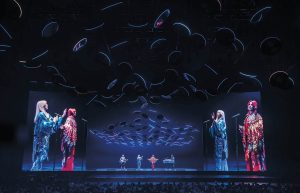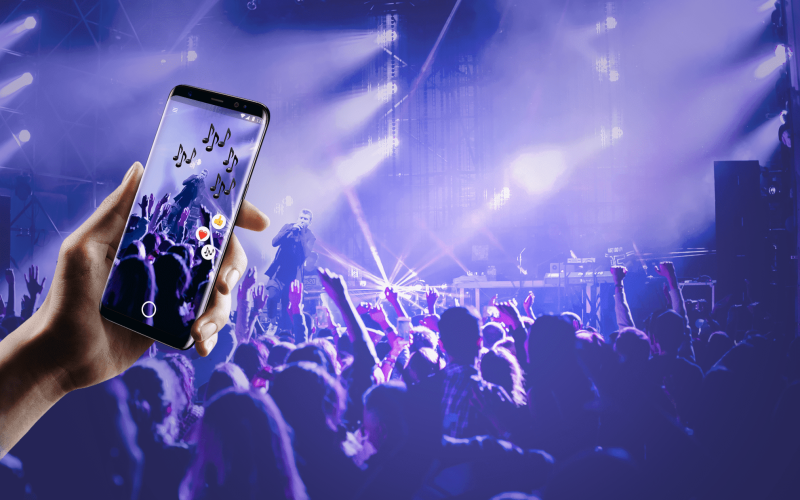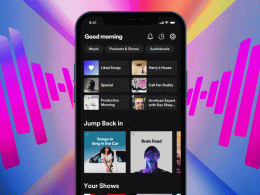Introduction
The realm of live performances has always been a dynamic and evolving space, driven by the desire to create unforgettable experiences for audiences. From the ancient Greek amphitheaters to modern-day stadium concerts, the essence of live performances lies in their ability to captivate and engage. In recent years, Augmented Reality (AR) has emerged as a groundbreaking technology that is redefining the landscape of live performances. This article delves into the multifaceted role of Augmented Reality in live performances, exploring its applications, benefits, challenges, and future prospects.
Role of Augmented Reality

-
What is Augmented Reality?
Augmented Reality (AR) is a technology that overlays digital content onto the real world, enhancing the user’s perception and interaction with their environment. Unlike Virtual Reality (VR), which creates a completely immersive digital environment, AR integrates digital elements into the physical world, allowing for a seamless blend of reality and virtual content.
-
The Evolution of AR Technology
The concept of AR has been around for decades, but it has gained significant traction in recent years due to advancements in computing power, mobile technology, and software development. From early experiments with head-mounted displays to sophisticated AR applications on smartphones and tablets, the technology has come a long way.
The Intersection of AR and Live Performances

-
Enhancing Visual Spectacles
One of the most prominent applications of AR in live performances is the enhancement of visual spectacles. AR can transform a traditional stage into a dynamic canvas, where digital elements interact with performers and the audience in real-time. This creates a visually stunning experience that transcends the limitations of physical props and sets.
Case Study: Coachella Music Festival
At the Coachella Music Festival, AR was used to create an immersive experience for attendees. Using a dedicated app, festival-goers could see digital art installations and interactive elements superimposed onto the festival grounds. This not only added a new layer of engagement but also allowed artists to express their creativity in novel ways.
-
Interactive Audience Engagement
AR also plays a crucial role in enhancing audience engagement during live performances. By integrating AR elements into performances, creators can offer interactive experiences that involve the audience directly. This can range from simple interactions, such as voting for the next song in a concert, to more complex experiences, like participating in a virtual treasure hunt during a theater performance.
Example: AR in Theater Productions
In theater productions, AR can be used to create interactive story lines where the audience’s choices influence the outcome of the performance. This not only makes the experience more engaging but also encourages repeat attendance, as each performance can offer a unique experience based on audience interaction.
-
Expanding Creative Boundaries
AR provides artists and performers with a new set of tools to expand their creative boundaries. By integrating digital elements into their performances, artists can explore new themes, create more complex narratives, and experiment with innovative visual effects.
Case Study: Björk’s “Biophilia” Tour
Icelandic artist Björk has been at the forefront of integrating technology into her performances. During her “Biophilia” tour, AR was used to create an immersive experience that blended music, science, and nature. The audience could use an app to explore interactive content related to the themes of the songs, enhancing their understanding and appreciation of the performance.
Technical Aspects of AR in Live Performances

-
Hardware and Software Requirements
Implementing AR in live performances requires a combination of hardware and software components. On the hardware side, this includes devices such as smartphones, tablets, AR glasses, and projectors. On the software side, AR applications and platforms are needed to create and manage the digital content.
Example: AR Glasses
AR glasses, such as Microsoft HoloLens and Magic Leap, offer a hands-free AR experience, allowing performers and audience members to interact with digital content without the need for handheld devices. These glasses are equipped with sensors, cameras, and displays that overlay digital elements onto the real world.
-
Real-Time Data Processing
One of the key technical challenges in implementing AR in live performances is real-time data processing. AR applications need to process and render digital content in real-time, ensuring that it aligns accurately with the physical environment and the movements of performers and audience members.
Solution: Edge Computing
Edge computing is a technology that can help address this challenge by processing data closer to the source, reducing latency, and improving the performance of AR applications. By leveraging edge computing, AR experiences can be more responsive and immersive.
Benefits of AR in Live Performances
-
Enhanced Audience Experience
The primary benefit of AR in live performances is the enhanced audience experience. By integrating digital elements into performances, creators can offer a more immersive and engaging experience that captivates audiences and leaves a lasting impression.
-
New Revenue Streams
AR also opens up new revenue streams for artists and event organizers. For example, AR applications can offer in-app purchases, such as virtual merchandise or exclusive content, providing additional revenue opportunities.
-
Increased Accessibility
AR can make live performances more accessible to a wider audience. For example, AR applications can offer real-time translations, subtitles, or audio descriptions, making performances more inclusive for people with disabilities or those who speak different languages.
Challenges and Considerations

-
Technical Limitations
Despite the advancements in AR technology, there are still technical limitations that need to be addressed. These include issues related to hardware compatibility, battery life, and the accuracy of AR content alignment.
-
Cost and Resource Requirements
Implementing AR in live performances can be costly and resource-intensive. This includes the cost of hardware, software development, and the need for skilled professionals to create and manage AR content.
-
Audience Adoption
Another challenge is audience adoption. While AR technology is becoming more mainstream, there is still a learning curve for some audience members. Event organizers need to ensure that AR experiences are user-friendly and accessible to a diverse audience.
Future Prospects of AR in Live Performances
-
Integration with Other Technologies
The future of AR in live performances lies in its integration with other emerging technologies, such as Artificial Intelligence (AI), 5G, and the Internet of Things (IoT). These technologies can enhance the capabilities of AR, enabling more complex and interactive experiences.
-
Personalized Experiences
As AR technology continues to evolve, there is potential for more personalized experiences in live performances. For example, AR applications could use AI to analyze audience preferences and behaviors, offering tailored content and interactions that cater to individual tastes.
-
Virtual and Hybrid Events
The COVID-19 pandemic has accelerated the adoption of virtual and hybrid events, where live performances are streamed online and complemented with digital elements. AR can play a crucial role in enhancing these events, offering immersive and interactive experiences for remote audiences.
Conclusion
Augmented Reality is revolutionizing the world of live performances, offering new possibilities for creativity, engagement, and accessibility. While there are challenges to overcome, the benefits of AR in live performances are undeniable. As technology continues to advance, we can expect to see even more innovative and immersive experiences that captivate audiences and push the boundaries of what is possible in live performances.











